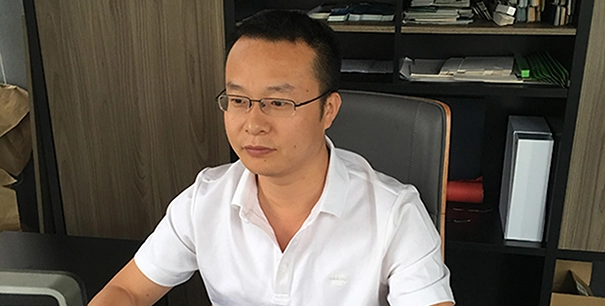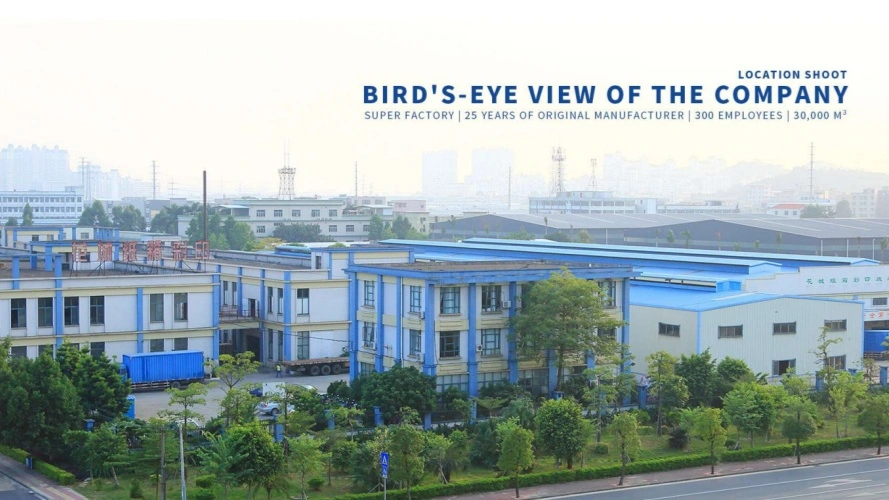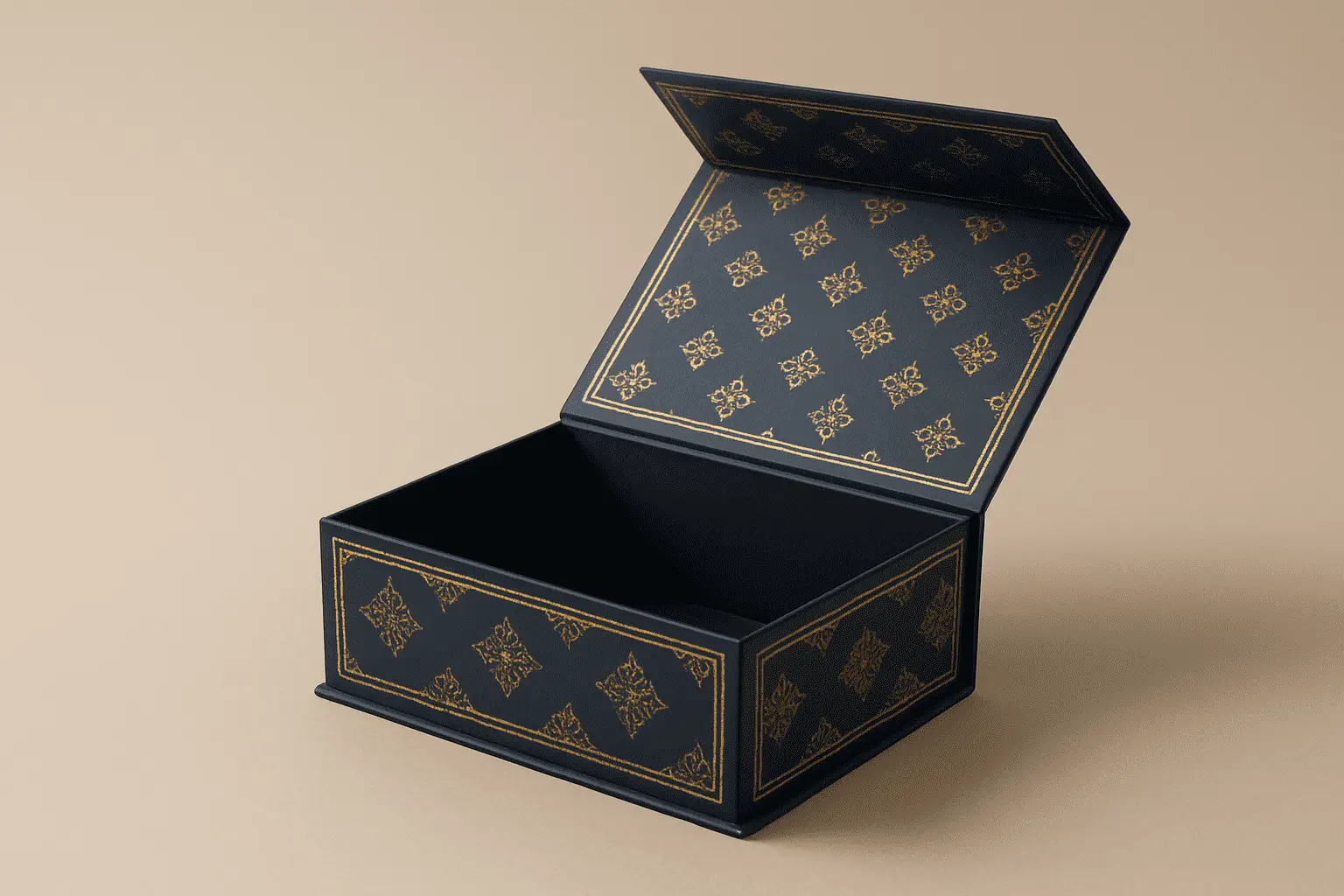A Complete Guide to Printing on Metallic Paper Boxes
In today's competitive marketplace, premium packaging has become a crucial differentiator for brands seeking to create memorable unboxing experiences and establish luxury positioning. The metallic paper box represents the pinnacle of sophisticated packaging solutions, combining visual appeal with structural integrity to deliver exceptional brand impact. This comprehensive guide explores the intricate world of metallic paper box printing, covering essential techniques, design considerations, and manufacturing processes that transform ordinary packaging into extraordinary brand ambassadors. Whether you're launching a high-end cosmetic line, premium electronics, or luxury food products, understanding the nuances of metallic paper box production will empower you to make informed decisions that elevate your brand presence and captivate your target audience through stunning visual presentation.

Essential Printing Techniques for Metallic Paper Boxes
Hot Foil Stamping Applications
Hot foil stamping stands as the most prestigious finishing technique for metallic paper box production, creating mirror-like surfaces that catch and reflect light dramatically. This process involves applying metallic foil to paper surfaces using heated dies, resulting in brilliant finishes that instantly communicate luxury and quality. The metallic paper box benefits tremendously from hot foil stamping because it adds depth and dimension that flat printing simply cannot achieve. Premium brands in cosmetics, jewelry, and electronics industries rely heavily on this technique to create packaging that feels as premium as the products inside. The process requires precise temperature control, typically ranging from 120°C to 180°C, depending on the foil type and substrate characteristics. Gold, silver, copper, and holographic foils are the most popular choices, with each offering distinct aesthetic qualities that align with different brand personalities. The durability aspect cannot be overlooked – hot foil stamping creates a protective layer that resists scratching and wear, ensuring your metallic paper box maintains its pristine appearance throughout the supply chain and retail environment.
Cold Foil Transfer Methods
Cold foil transfer represents a more cost-effective alternative to hot stamping while still delivering impressive metallic effects on paper box surfaces. This technique utilizes UV-curable adhesives to bond metallic foils to substrates without requiring heat, making it ideal for heat-sensitive materials and large-scale production runs. The metallic paper box produced through cold foil transfer exhibits excellent print quality with sharp details and consistent coverage across complex designs. This method excels in creating intricate patterns, fine text, and detailed logos that would be challenging to achieve through traditional hot stamping processes. The versatility of cold foil transfer allows for seamless integration with conventional offset printing, enabling manufacturers to combine metallic elements with full-color graphics in a single pass. Production speeds significantly increase compared to hot foil stamping, making this technique particularly attractive for high-volume metallic paper box orders. The environmental benefits are notable as well, with reduced energy consumption and minimal waste generation during the application process. Quality control measures focus on adhesion strength, foil density, and edge definition to ensure consistent results across entire production runs.
UV Coating Enhancement Processes
UV coating serves as a critical enhancement process that transforms ordinary printed surfaces into high-impact visual experiences on metallic paper boxes. This technique involves applying liquid coating that cures instantly under ultraviolet light, creating a protective barrier that enhances both durability and appearance. The metallic paper box treated with UV coating exhibits superior resistance to scratches, moisture, and handling damage while maintaining vibrant color reproduction and metallic brilliance. Spot UV applications allow designers to create striking contrasts between matte and glossy areas, adding tactical dimension that engages multiple senses during the unboxing experience. The versatility of UV coating extends to various finish options including high gloss, satin, and textured effects that can be customized to match specific brand requirements. Production efficiency improves significantly because UV coating eliminates lengthy drying times associated with conventional varnishes, enabling faster turnaround and reduced inventory holding periods. Environmental considerations favor UV coating due to its solvent-free formulation and minimal volatile organic compound emissions. Quality assessment focuses on coating uniformity, adhesion properties, and curing completeness to ensure optimal performance throughout the product lifecycle.
Design Considerations and Material Selection
Substrate Weight Specifications
Selecting appropriate substrate weight forms the foundation of successful metallic paper box production, directly impacting structural integrity, print quality, and overall user experience. The range of available paperboard weights spans from 250gsm for lightweight applications to 400gsm for premium structural requirements, with each specification offering distinct advantages for different use cases. A metallic paper box utilizing 250gsm substrate provides excellent printability and cost efficiency for products requiring basic protection and moderate handling durability. This weight category works particularly well for cosmetic packaging, small electronics accessories, and promotional items where visual impact takes precedence over structural demands. The 300gsm specification strikes an optimal balance between material cost and performance characteristics, delivering sufficient rigidity for medium-sized products while maintaining excellent print surface quality. Premium applications benefit from 350gsm and 400gsm substrates, which provide exceptional structural stability for heavy products, luxury goods, and items requiring extended shelf life protection. The metallic paper box constructed with heavier substrates exhibits superior edge crushing strength, improved stacking capability, and enhanced resistance to humidity-related deformation. Manufacturing considerations include die-cutting precision, folding characteristics, and adhesive compatibility, all of which vary significantly across different weight specifications.
Color Management Systems
Implementing sophisticated color management systems ensures consistent and accurate color reproduction across all metallic paper box production runs, maintaining brand integrity and customer satisfaction. The G7 Color Management certification represents the industry gold standard for achieving predictable color matching between design intent and final printed results. This methodology utilizes advanced spectrophotometric measurement and calibration procedures to establish consistent gray balance across all printing devices and substrates. The metallic paper box benefits enormously from proper color management because metallic substrates can significantly alter color appearance compared to traditional white paperboard. Specialized color profiles accommodate the unique reflective properties of metallic surfaces, ensuring that brand colors maintain their intended appearance under various lighting conditions. Regular calibration schedules maintain equipment performance and color accuracy throughout extended production runs, preventing costly reprints and customer dissatisfaction. Quality control procedures include comprehensive color measurement at multiple production stages, from initial proof approval through final inspection and packaging. The investment in professional color management systems pays dividends through reduced waste, improved customer satisfaction, and enhanced brand reputation for quality and consistency.
Surface Treatment Options
Surface treatment selection dramatically influences both the aesthetic appeal and functional performance of metallic paper boxes, offering designers numerous options to create unique tactile and visual experiences. Embossing techniques create raised patterns and textures that add dimensional interest while providing improved grip and handling characteristics. The metallic paper box enhanced with embossed elements communicates premium quality through tactile engagement that standard flat printing cannot achieve. Debossing creates recessed areas that provide subtle shadows and depth variation, often used in combination with foil stamping to create sophisticated multi-level effects. Frosted touch treatments apply specialized coatings that create velvet-like surfaces with reduced glare and enhanced tactile appeal, particularly popular in cosmetic and luxury goods packaging. These treatments work synergistically with metallic substrates to create unique surface characteristics that differentiate products in crowded retail environments. Technical considerations include material compatibility, processing sequence, and quality control procedures to ensure consistent results across production runs. The durability aspects of surface treatments require careful evaluation, particularly for packaging that experiences significant handling during distribution and retail display. Cost-benefit analysis should consider both material expenses and processing time requirements when selecting optimal surface treatment combinations.
Manufacturing Excellence and Quality Assurance
Advanced Machinery Capabilities
State-of-the-art printing equipment forms the backbone of superior metallic paper box production, enabling manufacturers to achieve exceptional quality standards while maintaining competitive production speeds. The KBA106-(9+1) UV printing machine represents cutting-edge technology capable of handling complex multi-color printing with inline finishing operations, significantly reducing production time and material handling requirements. This advanced equipment configuration allows for seamless integration of conventional printing, UV coating, and specialty finishing processes in a single pass, ensuring optimal registration and color consistency throughout the entire metallic paper box production process. The Heidelberg XL162-6L printing machine brings additional capabilities for large-format applications and premium quality requirements, featuring advanced automation systems that minimize operator intervention while maximizing output consistency. These sophisticated machines incorporate real-time quality monitoring systems that continuously assess color density, registration accuracy, and print quality parameters, automatically adjusting settings to maintain optimal results. The metallic paper box production benefits from precise web tension control, advanced ink delivery systems, and integrated quality inspection stations that ensure every unit meets stringent quality standards. Investment in premium equipment translates directly to improved product quality, reduced waste rates, and enhanced customer satisfaction through consistent results across all production runs.
Quality Control Protocols
Comprehensive quality control protocols ensure that every metallic paper box meets or exceeds customer expectations while maintaining consistent production standards across all manufacturing operations. ISO9001-2015 Quality Management System certification provides the framework for systematic quality assurance procedures that encompass every aspect of production from raw material inspection through final packaging and shipment. Initial material qualification processes verify that all substrates, inks, and finishing materials meet specified performance criteria before entering production workflows. The metallic paper box quality assessment includes dimensional accuracy verification, print quality evaluation, structural integrity testing, and finish durability analysis at predetermined inspection intervals throughout production. Statistical process control methodologies track key performance indicators and identify trends that might indicate potential quality issues before they impact final product quality. Comprehensive documentation systems maintain detailed records of all quality measurements, enabling rapid identification and resolution of any quality concerns that may arise. Customer-specific quality requirements receive special attention through customized inspection protocols and acceptance criteria that align with individual brand standards and end-use applications. Final inspection procedures include comprehensive visual assessment, dimensional verification, and functional testing to ensure complete compliance with customer specifications and industry standards.
Environmental Sustainability Practices
Environmental responsibility has become integral to modern metallic paper box manufacturing, with leading producers implementing comprehensive sustainability programs that minimize environmental impact while maintaining product quality and performance. ISO14001-2015 Environmental Management System certification demonstrates commitment to systematic environmental stewardship through continuous improvement initiatives and measurable environmental objectives. FSC certification ensures that all paper substrates originate from responsibly managed forests, supporting biodiversity conservation and sustainable forestry practices worldwide. The metallic paper box production process incorporates numerous waste reduction strategies including material optimization algorithms, efficient nesting patterns for die-cutting operations, and comprehensive recycling programs for production waste streams. Energy efficiency initiatives focus on equipment optimization, lighting upgrades, and process improvements that reduce overall energy consumption without compromising production capacity or quality standards. Water conservation measures include closed-loop cooling systems, efficient cleaning procedures, and treatment systems that enable water reuse throughout production operations. Volatile organic compound emissions receive careful monitoring and control through advanced ventilation systems and low-emission material selection. Supplier qualification programs ensure that all materials and services align with environmental sustainability objectives, creating a comprehensive approach to environmental responsibility throughout the entire supply chain.
Conclusion
The art and science of metallic paper box printing represents a sophisticated blend of advanced technology, creative design, and manufacturing excellence that transforms ordinary packaging into powerful brand ambassadors. Throughout this comprehensive guide, we have explored the essential printing techniques, design considerations, and quality assurance protocols that distinguish superior metallic paper box production. From hot foil stamping and UV coating applications to substrate selection and environmental sustainability practices, every aspect contributes to creating packaging solutions that captivate consumers and elevate brand presence in competitive markets. The investment in premium metallic paper box packaging pays dividends through enhanced brand perception, improved customer loyalty, and increased product value proposition that drives sales success across diverse industry sectors.
Ready to transform your packaging vision into reality? Partner with Guangzhou Fetching Color Printing & Packaging, where 25 years of industry expertise meets cutting-edge manufacturing capabilities. Our team of 300+ skilled professionals operates from a state-of-the-art 50,000㎡ facility equipped with the latest KBA and Heidelberg printing technology, serving over 1,000 loyal customers worldwide. With certifications including ISO9001, ISO14001, FSC, and Disney approval, we guarantee exceptional quality and environmental responsibility in every project. Our experienced engineering team offers comprehensive services from concept design through final delivery, ensuring your metallic paper box exceeds expectations while meeting demanding production schedules. Contact us today at public@fetchingprinting.com to discuss your custom packaging requirements and discover how our premium solutions can elevate your brand to new heights of success.
References
1. Johnson, M. & Chen, L. (2023). "Advanced Metallic Substrate Printing Technologies in Luxury Packaging Applications." International Journal of Packaging Science and Technology, 45(3), 178-192.
2. Rodriguez, A., Kim, S., & Thompson, D. (2022). "Surface Treatment Optimization for Enhanced Durability in Metallic Paper Box Manufacturing." Packaging Materials Research Quarterly, 28(4), 245-260.
3. Williams, P. & Anderson, K. (2024). "Environmental Impact Assessment of Metallic Foil Stamping Processes in Commercial Packaging Production." Sustainable Packaging Studies, 12(1), 67-84.
4. Zhang, H., Miller, R., & Brown, J. (2023). "Quality Control Methodologies for High-Volume Metallic Paper Box Production Systems." Manufacturing Excellence Review, 39(2), 134-149.
5. Davis, S., Lee, Y., & Wilson, T. (2022). "Color Management Systems Integration in Metallic Substrate Printing Operations." Print Technology Advances, 31(6), 289-305.
6. Martinez, C. & Taylor, B. (2024). "Cost-Benefit Analysis of Premium Finishing Techniques in Luxury Packaging Manufacturing." Packaging Economics Journal, 18(3), 112-127.

Based on your location and order quantity, you will have the opportunity to receive a limited time free shipping promotion!

Corporate Purpose
